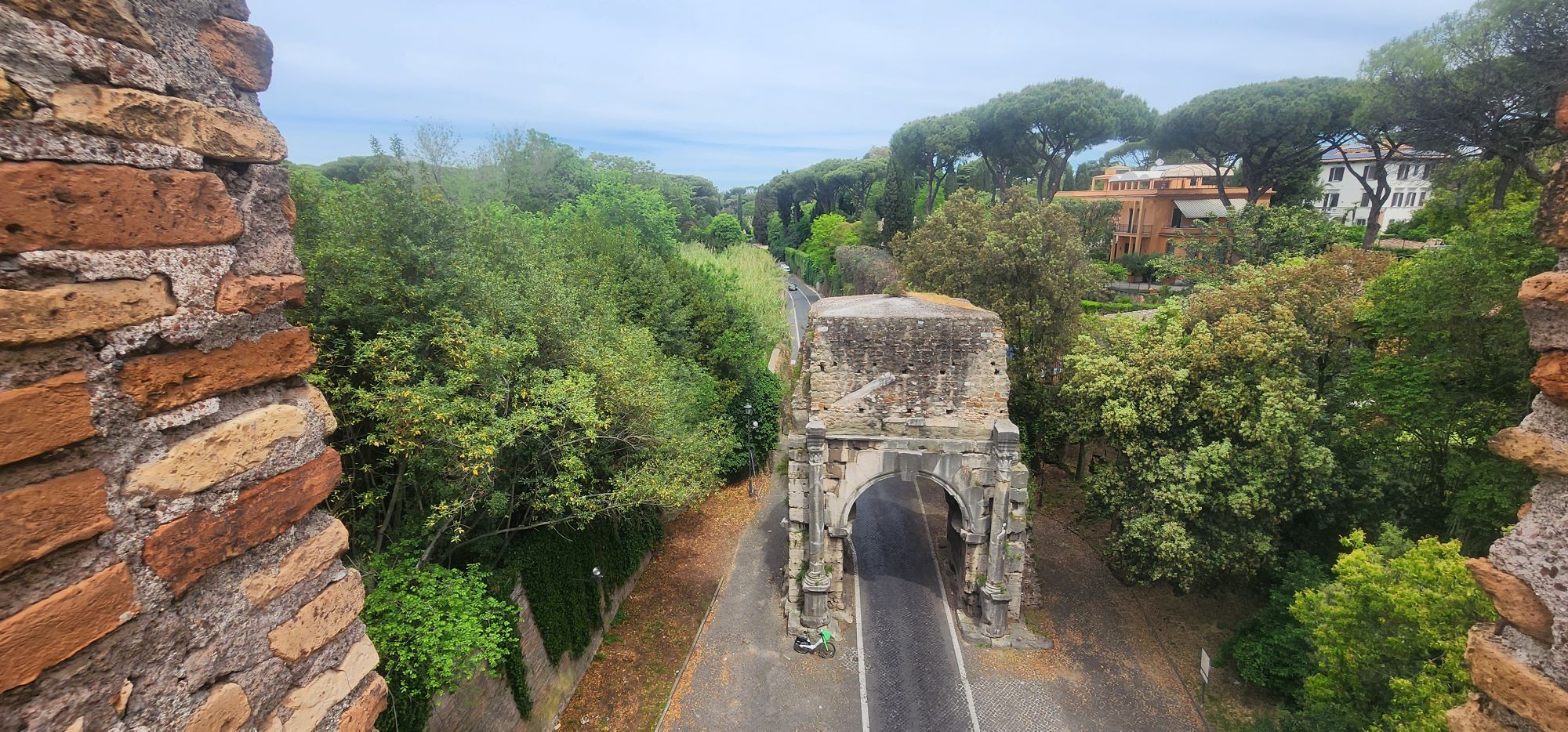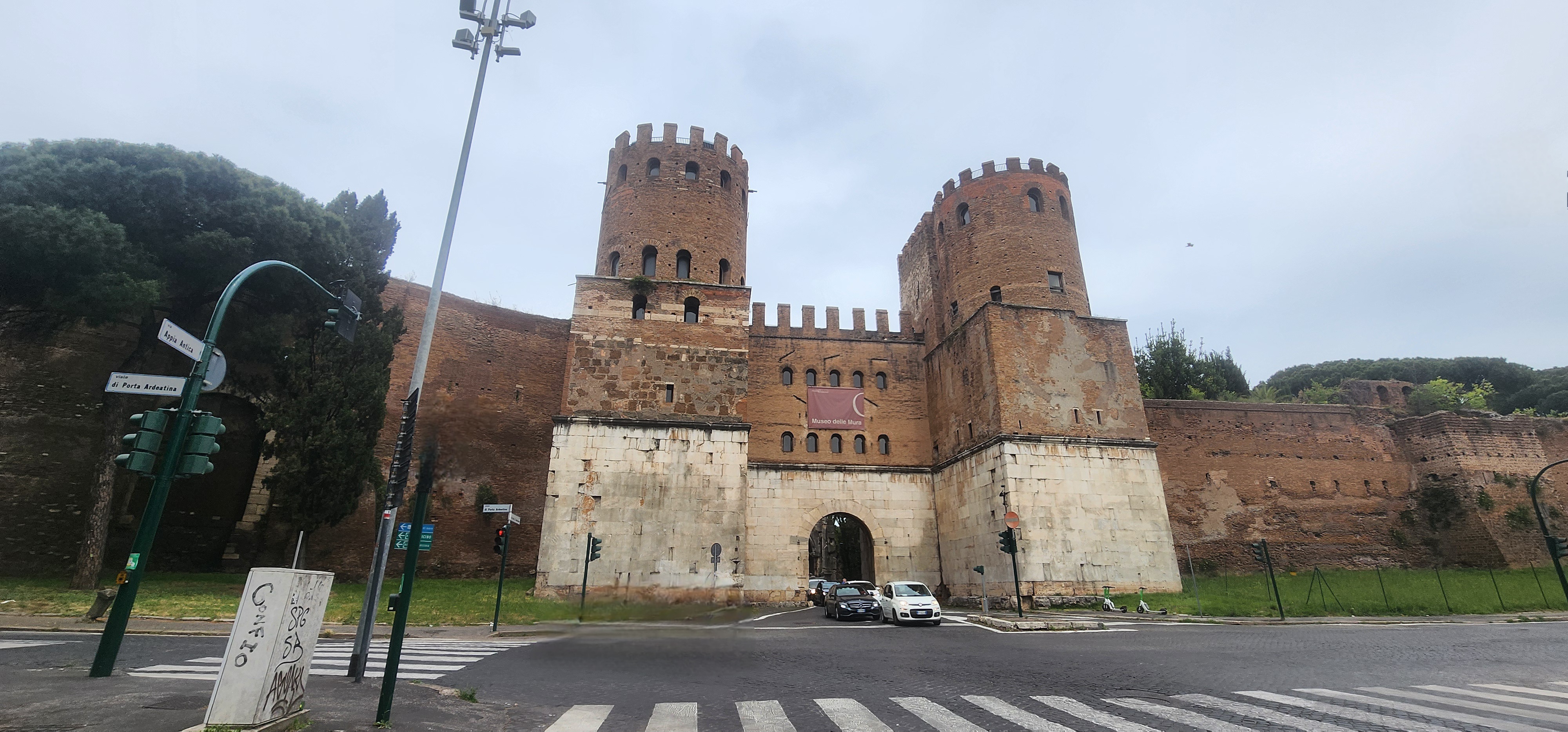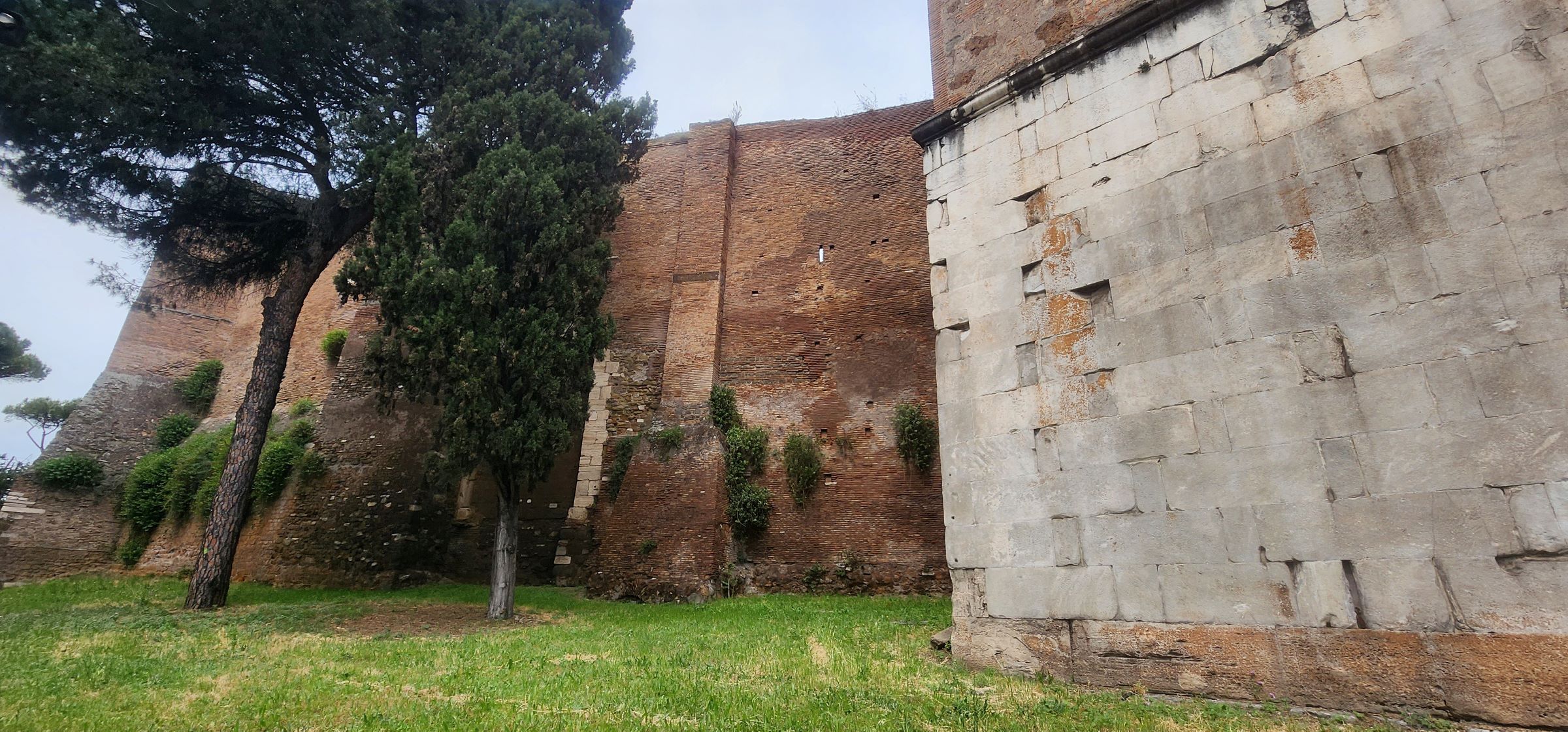About Aurelian Walls of Rome
The Aurelian Walls are massive ancient defensive fortification built in the 3rd century to protect Rome from invasions and mark the boundaries of the expanding city.
Scale and Substance
Spanning nearly 19km, the Aurelian Walls enclosed a much larger area than earlier defences. Rising 6 to 8m high and 3.5m thick, they featured watchtowers spaced every 30m. To save time and resources, existing structures such as aqueducts, amphitheatres, and buildings were incorporated into the wall’s construction.
Gateways of Power and Control
The main gates boasted dual arches flanked by semicircular towers, while smaller gates used simpler designs. These gateways controlled major roads, serving as customs posts, military checkpoints, and emblems of imperial authority. Gates like Porta San Sebastiano and Porta Pia still stand today, bearing witness to Rome’s lasting defensive legacy.
Porta San Sebastiano and the Museum of the Walls
Porta San Sebastiano now houses the Museum of the Walls, where visitors can walk along the ancient ramparts. The museum provides fascinating insights into the history, construction, and significance of the Aurelian Walls.
- The Aurelian Walls enclosed about 13.7 km², enough to accommodate over a million residents.
- Some sections of the walls had secret tunnels and small doors that let soldiers sneak out for surprise attacks or helped people escape during attacks.
- Porta Pia’s design is attributed to Michelangelo, but after his death, Giacomo del Duca completed the gate in the16th century.






